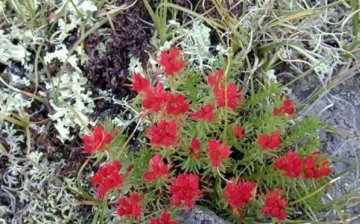Rhodiola fourfold - Altai medicine
A perennial Altai plant of the Rhodiola four-petal family is popularly called a red brush, which it will resemble if it is dug up along with a long taproot. With its medicinal effect, the plant is similar to the popular Rhodiola rosea, but it also has a number of features. It is used to treat infertility in women and men, as well as tumor processes and neoplasms. The plant is a powerful natural immunostimulant and adaptogen. Altai herbalists recommend a red brush for men for prostatitis, prostate adenoma and erectile dysfunction, for women - for gynecological diseases along with the boron uterus and for the treatment of mastopathy.
Rhodiola four-petal grows "cushions" on the mountain slopes, its fleshy stems do not exceed 15 cm in height. The plant looks great on alpine hills. It is better to place it on the northeastern slopes, since the red brush does not tolerate extreme heat. Prepare a nutritious and well-drained soil for it with fine gravel or rubble. Like all succulents, the plant requires abundant watering during growth, but does not tolerate waterlogging after flowering. The shoots of this Rhodiola die off the next year, but do not fall off, but persist for a rather long time, retaining small earth particles and providing protection to new buds.
Rhodiola four-lobed reproduces by dividing rhizomes and seeds. Rhizomes in August or September are dug out of the ground, washed in running water, dried in the shade, then cut into pieces containing a bud up to 5 cm long. The seeds of the plant ripen for 2-3 years. They are very small, so they are sown on seedlings in greenhouses, after having subjected them to stratification.



